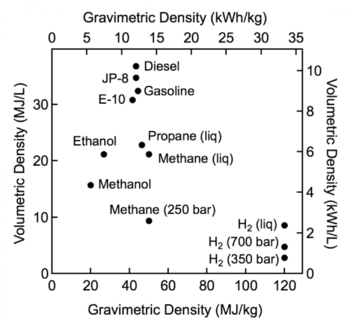Energy storage
- See also: Nuclear_power_reconsidered
This article is a brief comparison of the technologies relevant to the large-scale energy storage[1] needed for wind and solar and other intermittent energy sources. The most important point of comparison is cost per kilowatt hour (kWh), including the cost of ancillary equipment like power inverters or heat storage tanks. Other costs, like battery replacement can be added to cost per kWh by assuming a reasonable time over which these costs are accrued.
In a power grid with a mix of intermittent and dispatchable sources, and no storage, the capital cost of the dispatchable sources is determined by the peak demand on the grid. Adding intermittent sources reduces only the fuel costs of the dispatchable sources, not their capital costs.
Pumped hydro
This is the energy storage most widely used by utilities, where available. Near a river with a big reservoir, cost per kWh can be very low, limited only by the cost operating the motor/pump/turbine/generator. Where water is limited, the capital cost of building the reservoirs, upper and lower, should be divided by the total storage capacity and this result added the cost per kWh.
Thermal
Molten salt is a very efficient way to store energy in concentrated solar power (CSP) systems[2], where adding some well-insulated storage tanks does not significantly increase the thermal losses.
Batteries
Batteries are still too expensive for utility-scale systems, but even with an optimistic projection of future technology ($100 per kWh) a small city with 1 GW average consumption might need 100 hours of storage, requiring a $10 billion capital investment, ten times the cost of the plant.
Hydrogen

Hydrogen energy storage may become an important competitor to pumped hydro and thermal, if high-temperature nuclear reactors become available. The readily available high-temperature heat from these reactors will offset the inefficiency of generating the hydrogen from water. The volumetric energy density is too low for transportation uses (see Fig.1) but not a problem for utilities.
Other
Although not storing energy to be used for generating electricity, high-temperature reactors can perform the equivalent of energy storage by using excess available energy to power processes that don't care if the energy is intermittent, like the production of steel, cement, and fertilizer. This "process heat" is a big part of our total energy consumption, and can be timed to take advantage of periods when the intermittent sources are at full power.